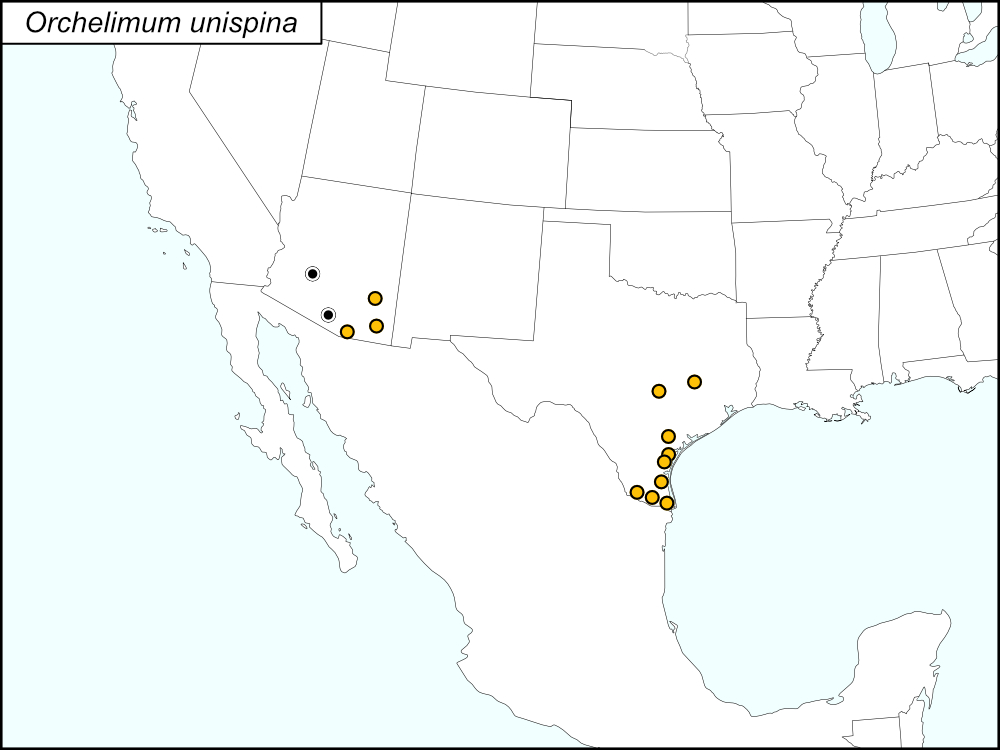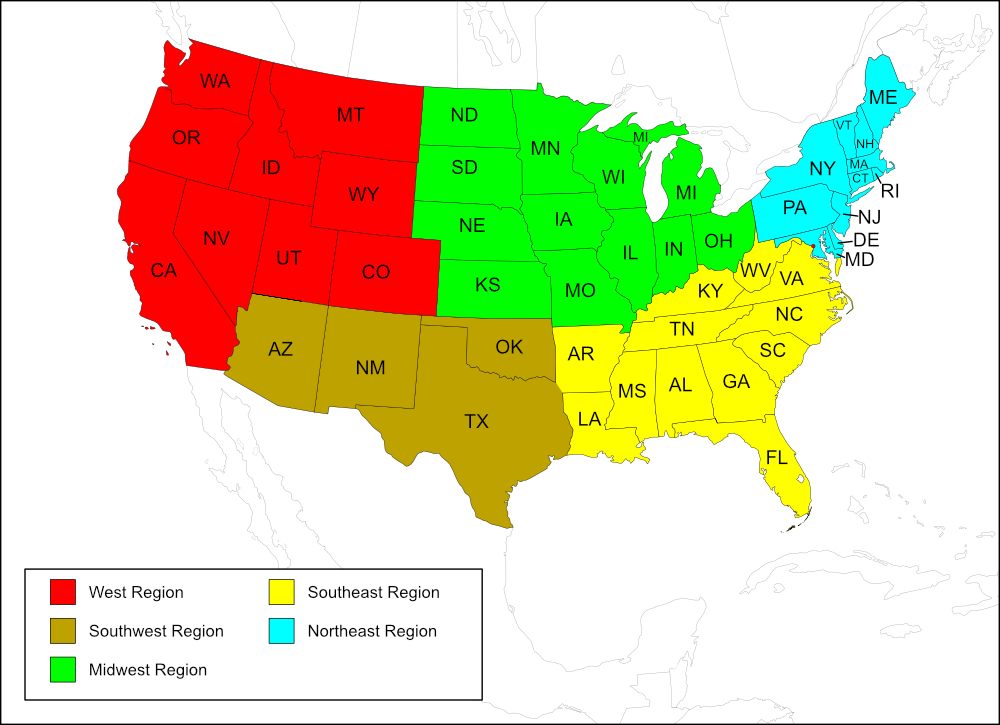Arizona meadow katydid
Orchelimum unispina

All dots on the distribution map represent county records. The black dots  are records from tblMain. Gold dots
are records from tblMain. Gold dots  represent records from iNaturalist.
represent records from iNaturalist.
Brandon Woo, top observer and top identifier of O. unispina on iNaturalist and PhD student in the Song Lab at Texas A&M University, said this about O. unispina's distribution (email sent on 8 May 2025):
The distribution of O. unispina is pretty interesting and I have tried to collect specimens wherever I encounter the species. Initially it was thought to occur only in Mexico and southeastern [Arizona] (as the SINA map [currently*] shows), but in 2019 I found it to be common in the lower Rio Grande Valley of Texas. Subsequently, I found other iNat and BugGuide records that show it has been in Texas since at least 2010. Since I moved to Texas in 2021, and have collected in quite a few locations, I have found that the species is actually quite common and abundant (and usually easy to collect too) from the Rio Grande Valley all the way to the Corpus Christi area. I have also collected it occasionally from other locations in Texas, as far north as College Station, but never more than 3-4 individuals at a time. These seem to be from populations at the northern fringes of its range. In looking at the current records, it seems as though the species follows the Sierra Madre Occidental into Arizona and has also followed the Sierra Madre Oriental into Texas. Perhaps it has always been here?
*Email was sent when the original map page was still on SINA; at present the updated map page is on SINA. [tmy 10 May 2025]
Summary of Species' SINA Distribution*
Orchelimum unispina is found in southern Arizona and southeast Texas up to Brazos and Travis counties.
*North America, north of Mexico.
List of United States Regions, States, and Counties
Map of
United States
Regions
Map of United States Regions

Southwest Region
State: Arizona
Records from tblMain
Counties: Maricopa, Pima.
Records from iNaturalist
Counties: Cochise, Graham, Santa Cruz.
State: Texas
Records from iNaturalist
Counties: Brazos, Cameron, Goliad, Hidalgo, Kenedy, Nueces, Travis, San Patricio, Starr.
Notes
References:
The distribution map on this page is referred to as the 2024 distribution map.
The records for this species from tblMain are in agreement with the original dot map and the computer-generated map.
The records from iNaturalist are from research grade observations uploaded from 16 May 2017 to 14 December 2024. [tmy 10 May 2025]




